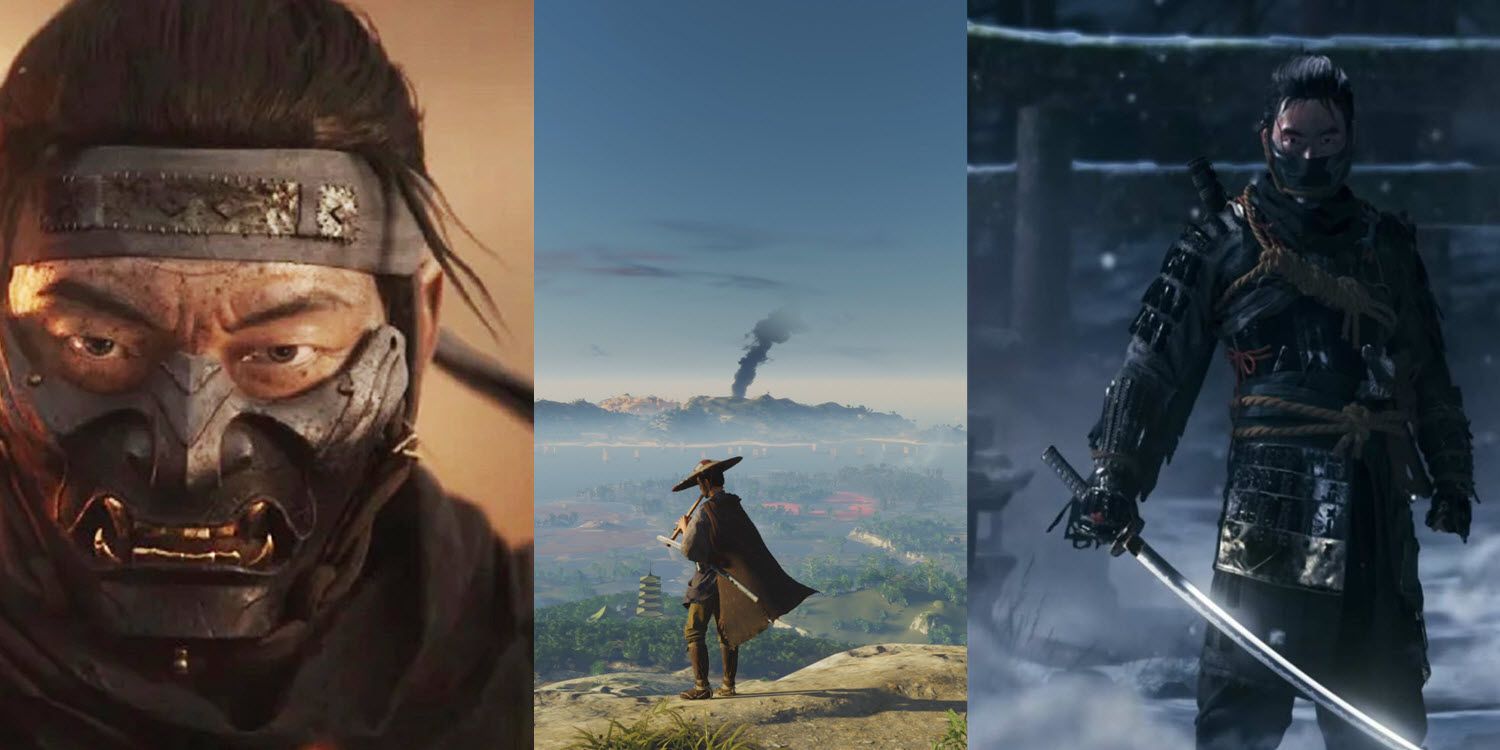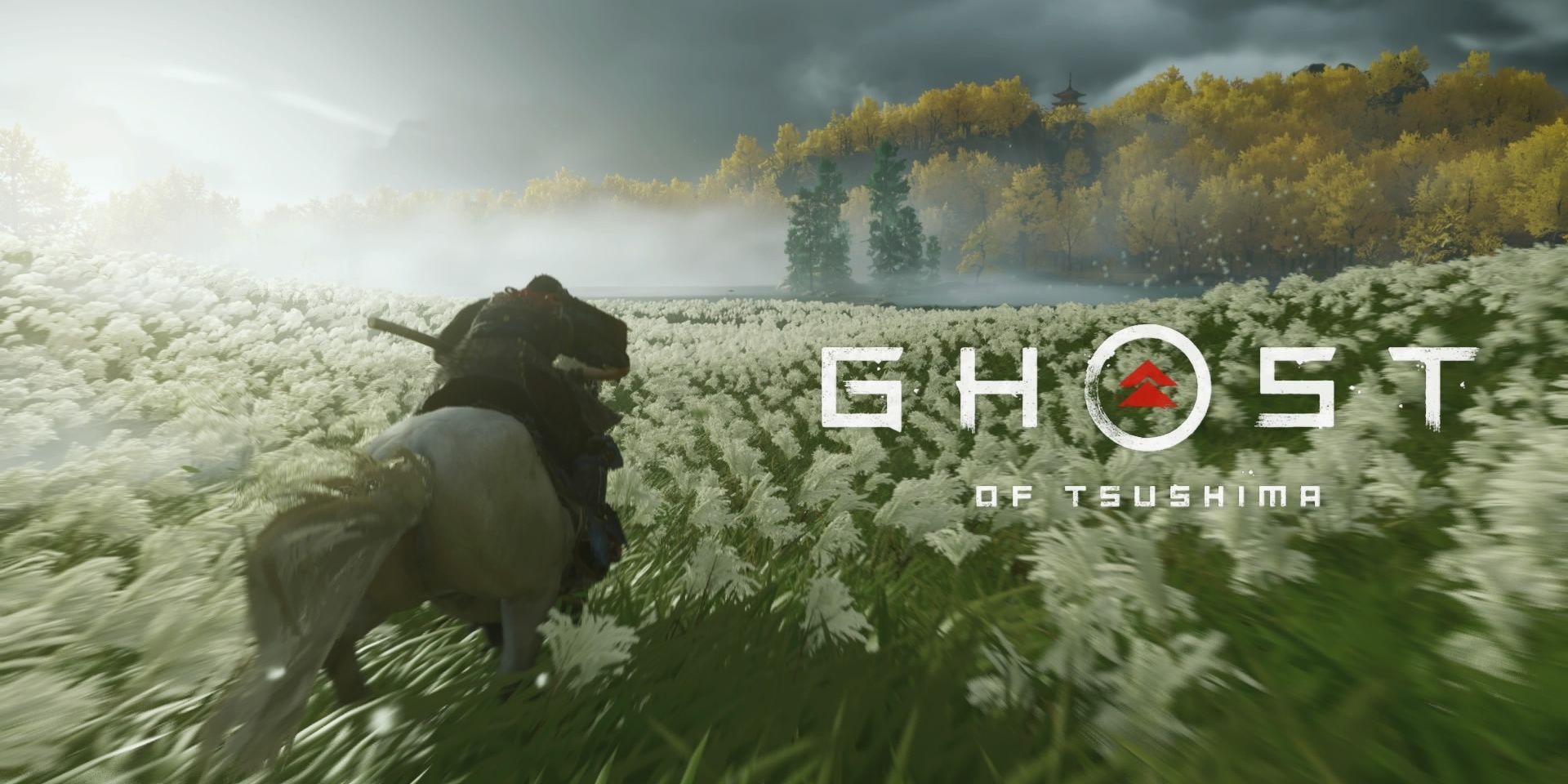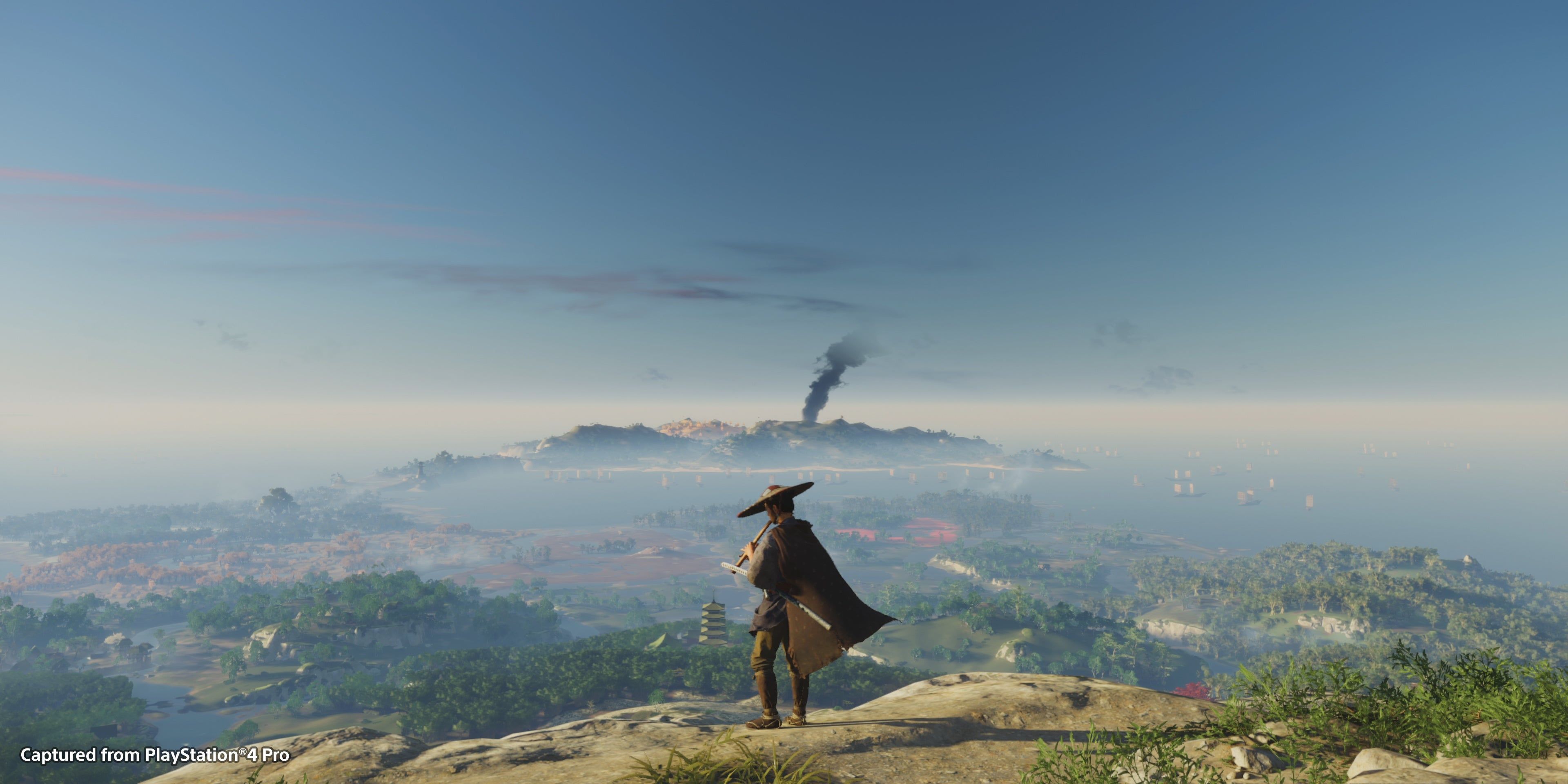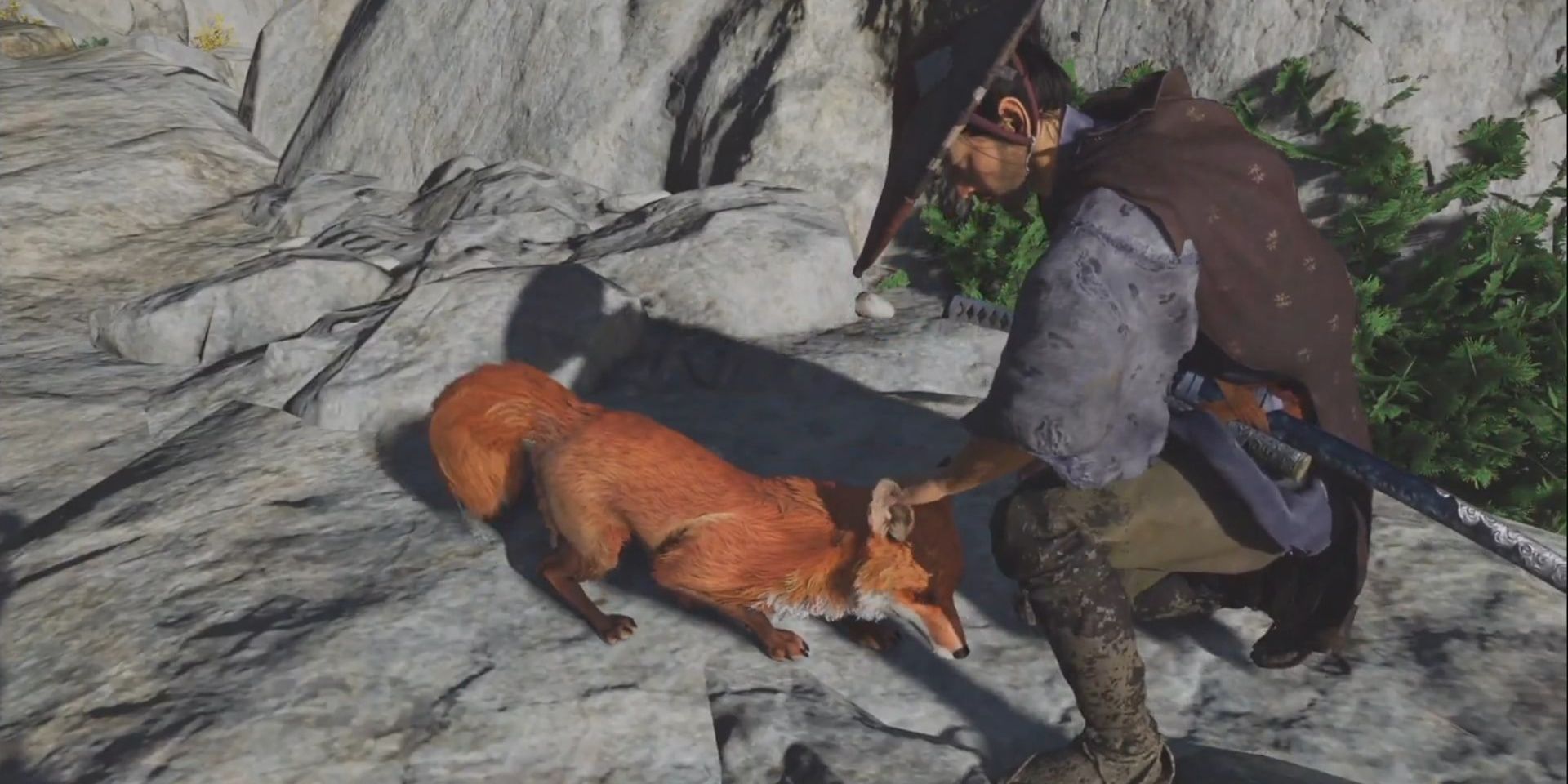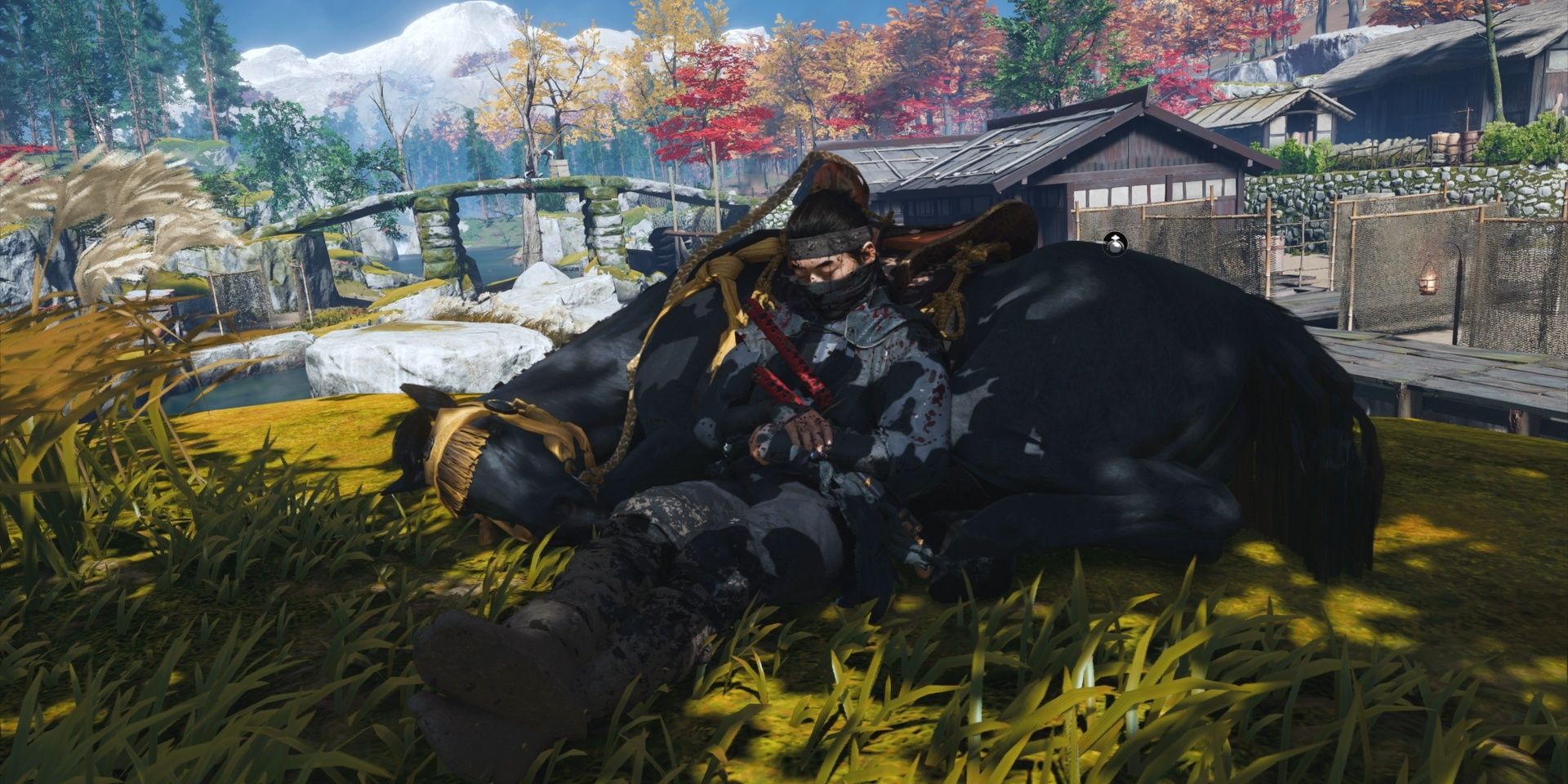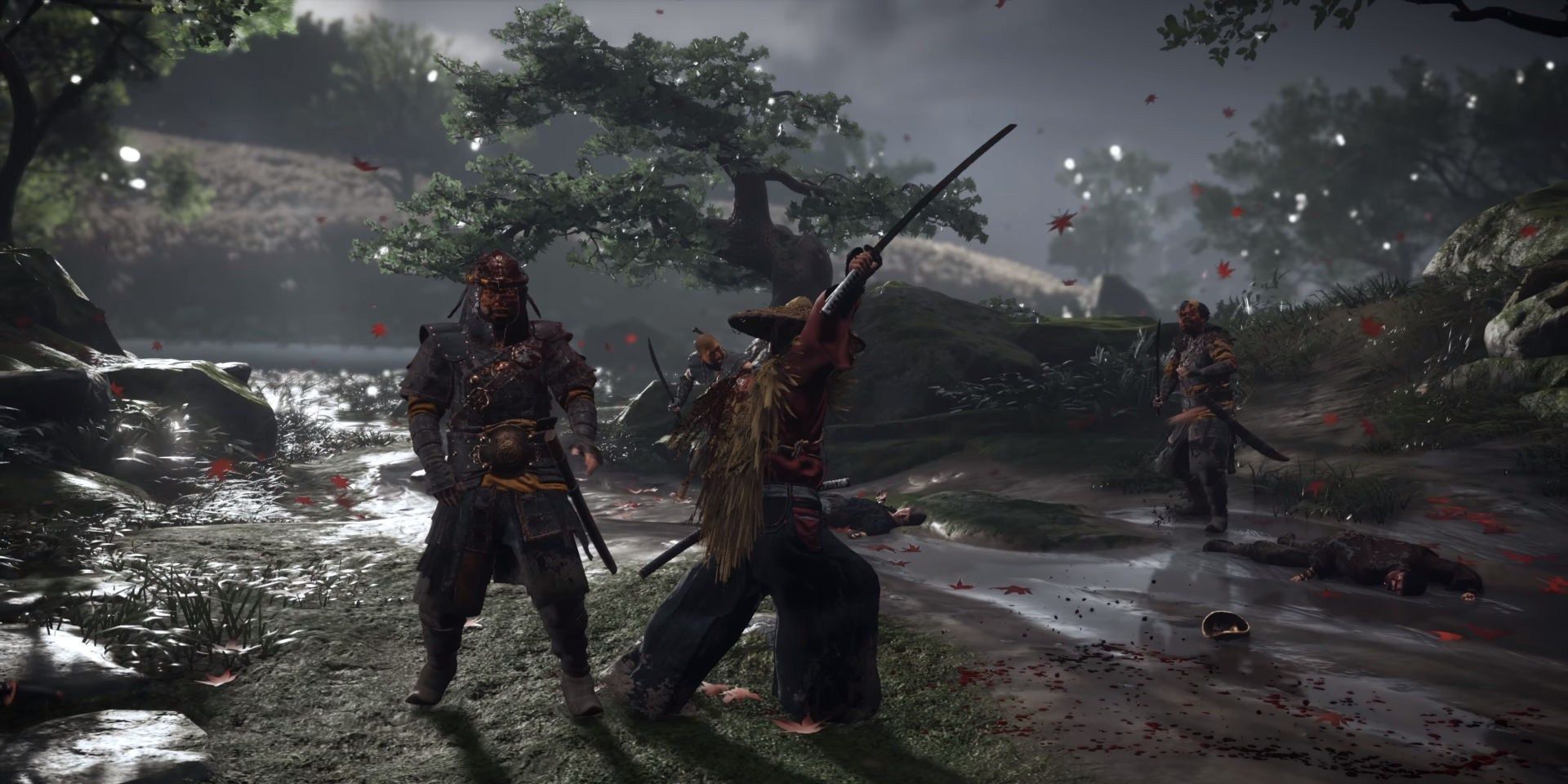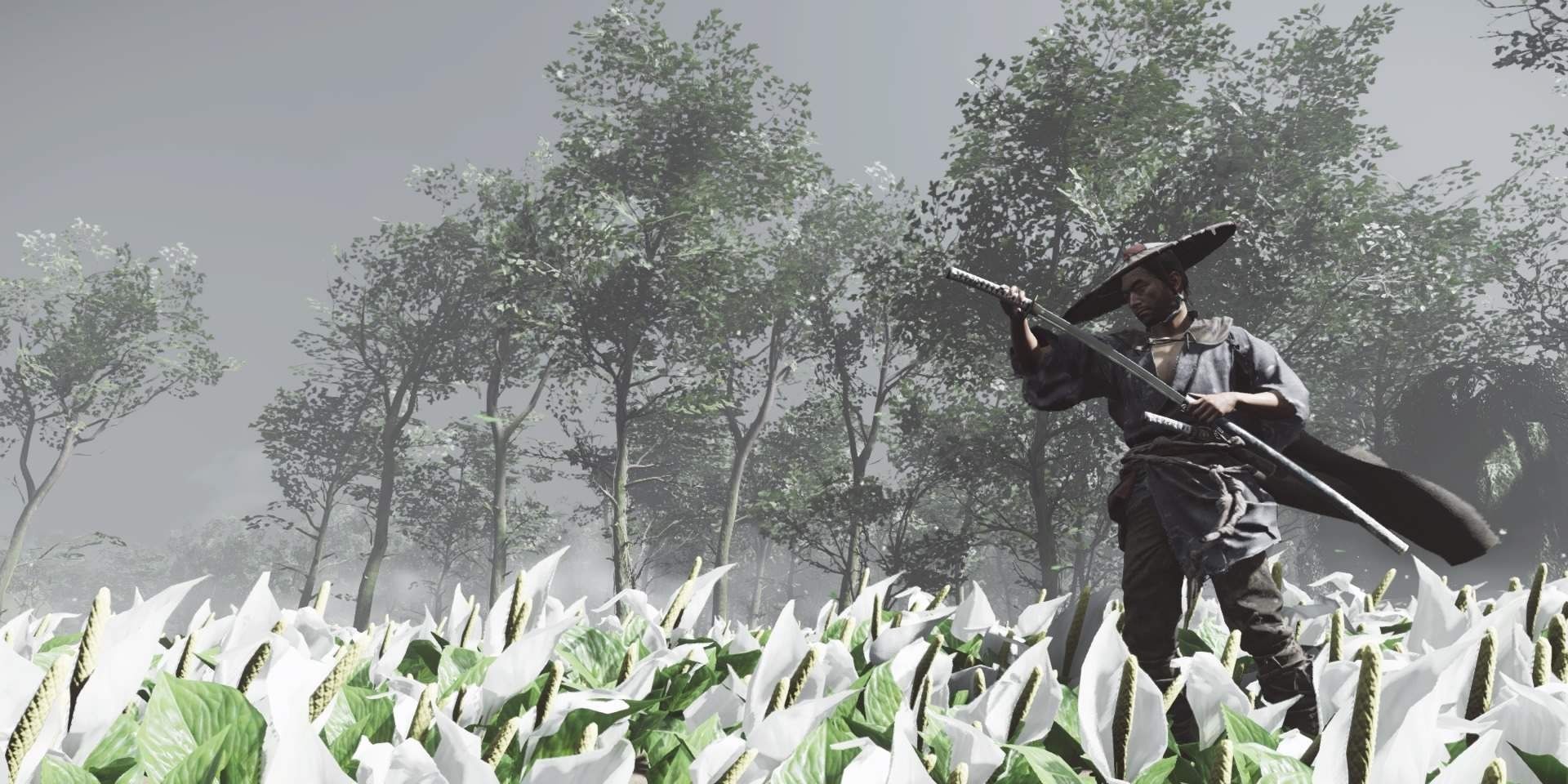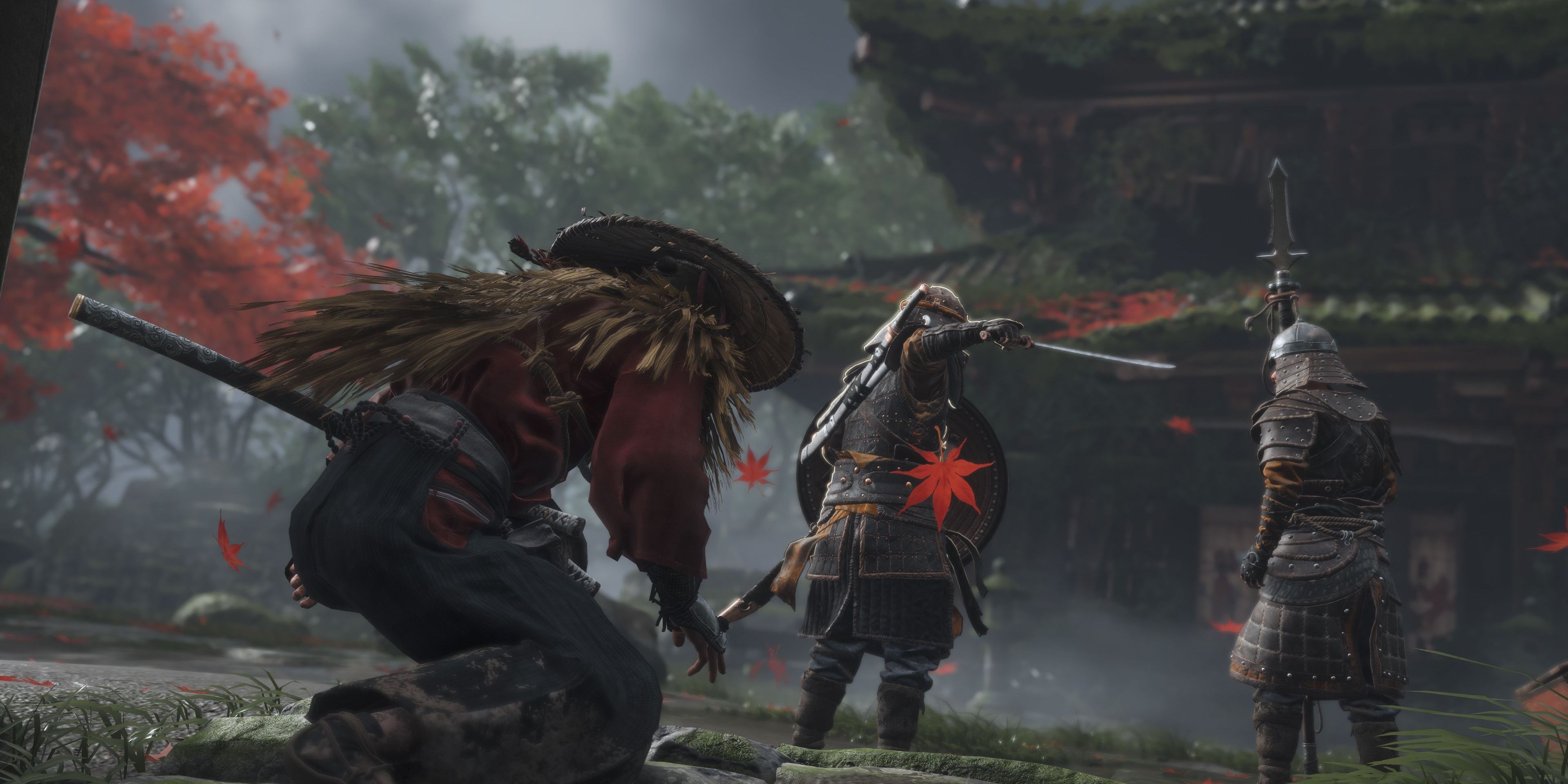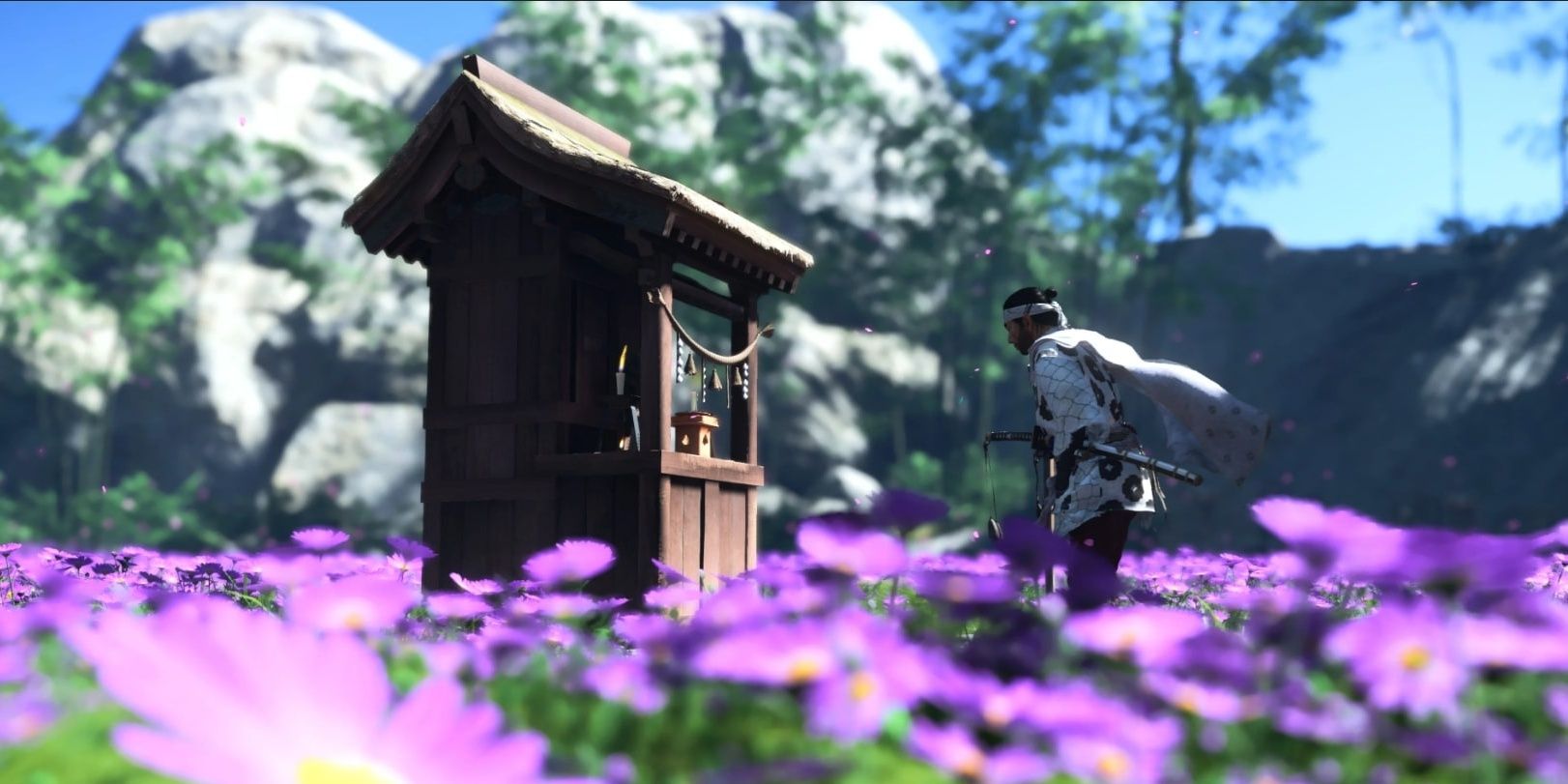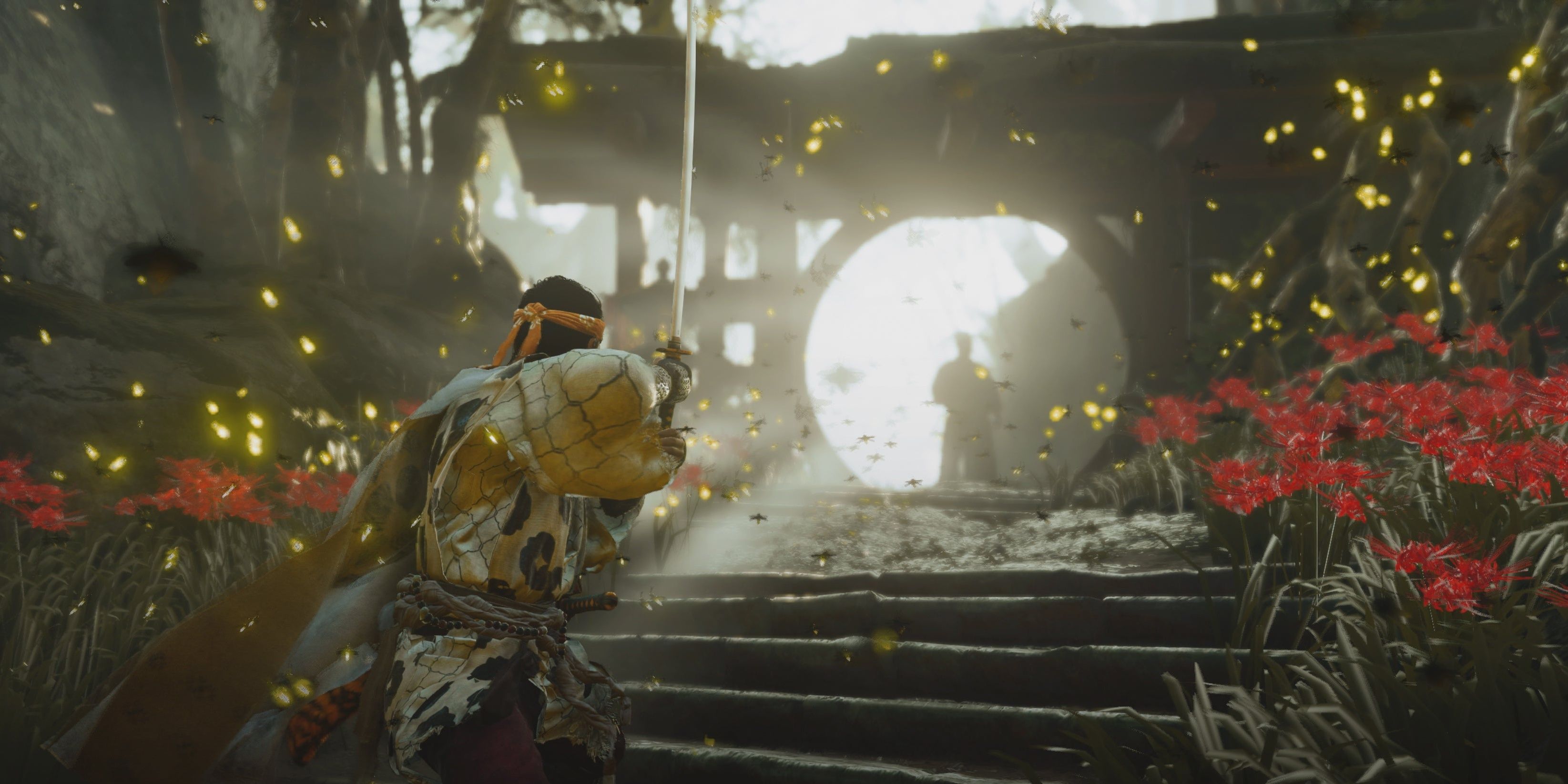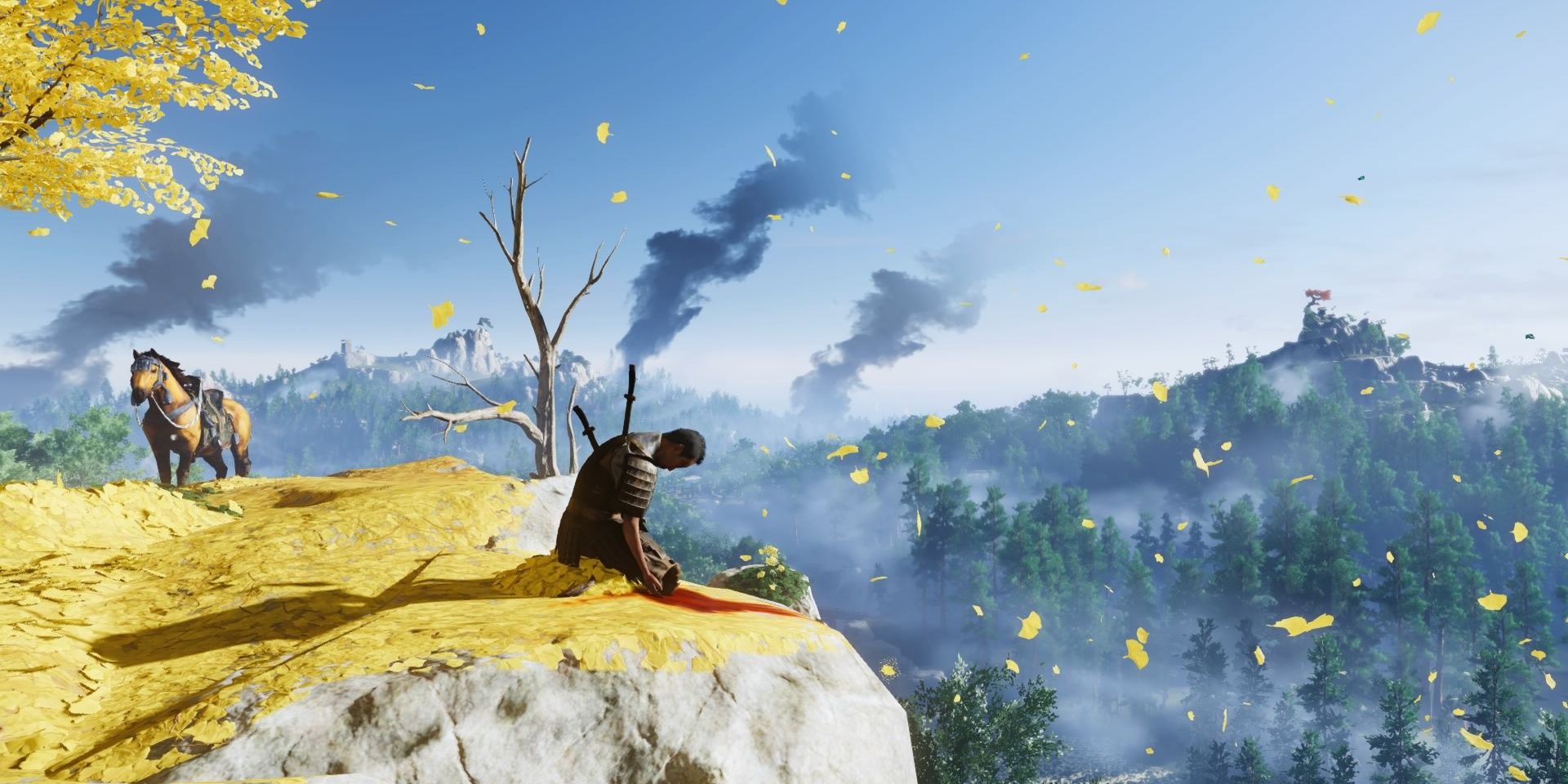Ghost of Tsushima is the latest game from the developers of hit Playstation exclusive series, Sly Cooper and Infamous, and it is also the last AAA PS4 exclusive game from a major developer, as Sony Interactive Entertainment prepares to release the PS5 in a matter of months. In only three days since release, the game has accomplished the achievement of being the fastest-selling original IP on the console, with over 2.4 million units sold globally. Several factors influenced the sales figures of the game: there are still many people stuck indoors due to the ongoing COVID-19 pandemic and the game has been receiving quite a healthy amount of hype since it was first announced in 2017.
Considering the excellent reviews it has received, the game is sure to rise even higher in popularity in the coming days. The beautifully crafted world of Ghost of Tsushima is brimming with hidden details, and a handful of them are listed below.
Gladiator Reference?
There's an abundance of tall grass on the island of Tsushima where the game is set, and it is not there just to look pretty while swaying in the stormy wind. In some instances, the grass will help the player navigate the world in stealth, but Jin Sakai interacts with the grass in other ways as well, something players might have missed because it is such a minor detail.
While riding through a grassy plain while on horse or even while walking, Jin will extend his hands and touch the top of the stalks, which can perhaps be seen as a nod to Gladiator. It's a neat touch and a very human thing to do when walking through a field of grass.
The Weather Responds To Your Gameplay
The lively weather in the world of Ghost of Tsushima is one of the major highlights of its visual experience. One way that the player can change or affect that weather according to their will in the game is using the flute. As the story in the game progresses, Jin steadily starts to abandon the honorable way of the samurai and embrace the ways of Ghost. in order to defeat the Mongols, and this change is reflected directly in the game, as the weather gets stormier as the story moves forward.
However, playing the game while exercising more stealth instead of direct combat actually increases the frequency of violent storms that Jin faces.
You Can Pet The Foxes
While exploring the massive and equally gorgeous island of Tsushima, players will not be given any clear-cut instructions on what places of interest they can visit, but are expected to discover them on their own by following "environmental cues" spread throughout the game.
One such cue is the foxes that players will come across in the game world, and following them will lead the way to hidden locations and shrines were players might randomly discover an item of great or no value. Petting the foxes is also something players can do, and they absolutely should, because why not?
Rest With Your Horse Companion
One common way to make it easier for the player to traverse the huge open-world map in video games is to give them a transport companion, which in most cases turns out to be a horse. Some games attempt to make the companions more than just a means of getting from point A to B, and Ghost of Tsushima does this by allowing the player to interact with the horse and trigger cute animation sequences.
After resting, Jin will give a little nudge to the horse to wake it up and, at times, deliver dialogue, like, "I wouldn’t trade you for anything.” The game attempts to make the player bond with the animal through subtle details.
Hyper-Realistic Blood Splatter
Playing as a samurai warrior in a feudal Japan in a game where sword combat is emphasized, there is bound to be a fair amount of bloodshed. Blood splatter in video games is no new feature, but Ghost of Tsushima takes it a step further. Depending on how an enemy is stabbed, blood will get splattered on Jin's clothes, gear, the enemy, and even the environment. The direction and type of attack influence the splatter, as well.
For example, stabbing an enemy directly in the chest will make blood splatter behind him, an upward slash will send blood spurting into the air. Nearly all attacks come with their own unique splatter animation.
Sword Sheathing Animation
Swiping right on the touch-pad of the controller will make Jin sheathe or unsheathe his sword, but that's not all that there's to it. If the sword is clean, Jin will simply put it back into the scabbard, but if the player has blood on their sword, a few different animations can play out, that show Jin cleaning the sword before putting it back in.
At times, Jin will wipe the blood off on his arm sleeve, and the spot where he wipes it off will get smeared in blood. In other cases, he will simply make a flicking motion at the ground creating a spatter of blood.
Practical Enemy A.I.
When facing hordes of enemy Mongols in the game, Jin will need to deal with both ranged and close-combat attacks, which can prove to be difficult at times. But a funny thing that many players will notice is that enemy archers will shout out loud before firing an arrow, and although it might seem confusing at first as to why they'd do this, there's an in-game explanation.
In reality, archers yell before firing an arrow to warn their allies in its path, so they don't get hit. This can actually be observed in the game, where enemies duck down to avoid the arrows when archers yell a warning. It's a nimble detail that carries real-life historical significance, as it was a technique the Japanese learned from the Mongols.
Importance Of Bowing
Bowing is a completely optional feature in the game that players aren't required to perform, but doing so will reveal some interesting details. Through bowing, Jin can pay respects to the fallen, and depending on whether the corpse is of an enemy, a villager, or even an animal, Jin will speak a unique dialogue in correspondence.
Besides paying respect, bowing in certain locations in the game, such as shrines, will trigger interesting animations that have no purpose other than being fun to observe. For example, bowing at the Mending Rock Shrine will cause a horde of frogs to appear and surround the player.
Impressive Particle Effects
The weather and environment of the island of Tsushima is truly a sight to behold, and the game does a fine job of balancing gameplay and visuals. Gusts of wind in the game are one of the most noticeable environmental elements, but their purpose is not just to look cool. They are also there to guide the players to the nearest point of interest.
Depending on the location, various kinds of particles can be seen blowing in the air. In the Golden Forest Area, yellow leaves swirl around. Upon visiting a burning village, players will find ash and embers scattered around and when walking through a field of grass, pollen grains can be observed blowing in the wind.
Mourning Eagles
When infiltrating enemy outposts in the game, which is a staple feature of nearly every open-world game, players will have to keep a watch out for Mongol eagles, which won't attack them directly, but will alert other enemies of their presence.
If the player kills the handler of the eagle (which they'll have to do to clear the area of enemies) but spares the eagle, the eagle will fly in circles over the body of their handler as an act of showing grief. After hovering around for a while, they'll eventually fly away.

